I was trying to use the ATMega328 ADC port A0 to read a signal. The hardware I used was:
- Seeeduino Stalker
- Electronic Brick Shield
- Microphone Electronic Brick (I found a link to the original developer store)
The signal I got seems to be only the positive part of a sine wave. Is it possible that this setup isn't suited for audio recording? What I have to change?



